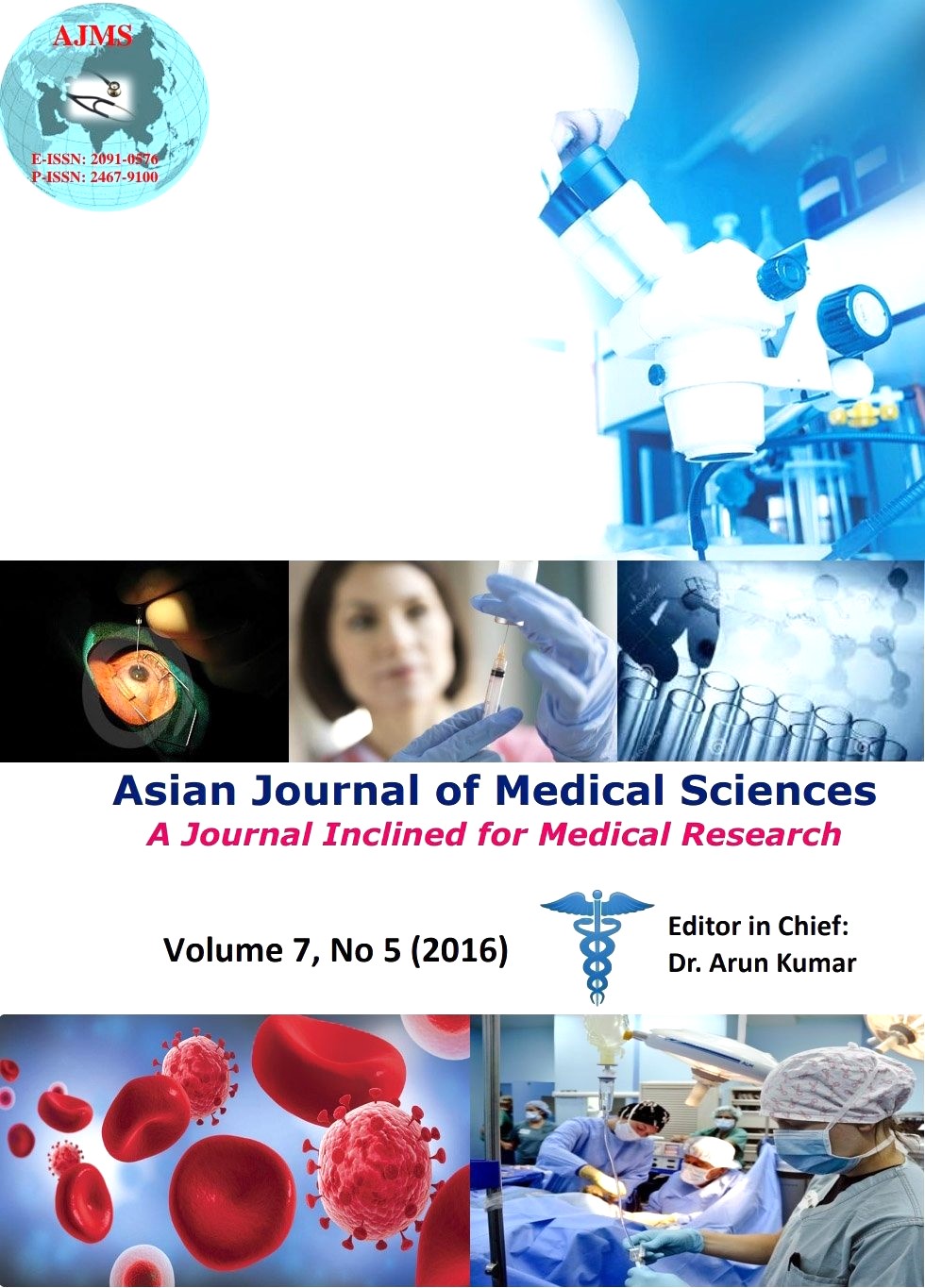Assessment of role of eosinophils in the progression of tongue carcinoma
Keywords:
Eosinophils, Invasive front, Metastasis, Tongue, Tumor thicknessAbstract
Background: Tumor associated tissue eosinophilia (TATE) is known as stromal infiltration of eosinophils in the stroma of tumor not associated with tumor necrosis or ulceration. It has been described in a variety of neoplasms, but the role in oral squamous cell carcinoma (OSCC) of tongue has not yet been clearly defined. Association of TATE with OSCC has shown variable results ranging from favorable to unfavorable or even no influence on prognosis.
Aims and Objectives: The aim of the present study was to correlate TATE with histopathological grades, lymph node status, tumor thickness and nature of tumor cells at the invasive front in OSCC of tongue.
Material and Methods: Retrospectively fifty six cases of OSCC of tongue treated with radical neck dissection were included, which were divided into Group I consists 22 cases (lymph node with metastasis) & Group II consists 34 cases (lymph node without metastasis). H & E stained sections were used to analyze TATE and compared with histopathological grades, lymph node status, tumor thickness and nature of invasive front. Statistical analysis was done using Chi-square test.
Results: TATE did not have any significant association with histopathological grades, lymph node status and nature of tumor cells at invasive front. But, tumor thickness and presence of eosinophils showed significant association. Also as the tumor thickness increased, the cells were more discohesive at the invasive front region.
Conclusion: Microenvironment of tumor significantly contributes in the tumor progression. Tumor thickness, nature of tumor cells at the invasive front and TATE together can help in assessing the behavior of tongue squamous cell carcinoma.
Asian Journal of Medical Sciences Vol.7(5) 2016 17-21
Downloads
Downloads
Additional Files
Published
How to Cite
Issue
Section
License
Authors who publish with this journal agree to the following terms:
- The journal holds copyright and publishes the work under a Creative Commons CC-BY-NC license that permits use, distribution and reprduction in any medium, provided the original work is properly cited and is not used for commercial purposes. The journal should be recognised as the original publisher of this work.
- Authors are able to enter into separate, additional contractual arrangements for the non-exclusive distribution of the journal's published version of the work (e.g., post it to an institutional repository or publish it in a book), with an acknowledgement of its initial publication in this journal.
- Authors are permitted and encouraged to post their work online (e.g., in institutional repositories or on their website) prior to and during the submission process, as it can lead to productive exchanges, as well as earlier and greater citation of published work (See The Effect of Open Access).




